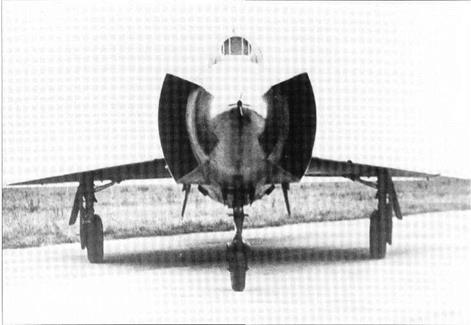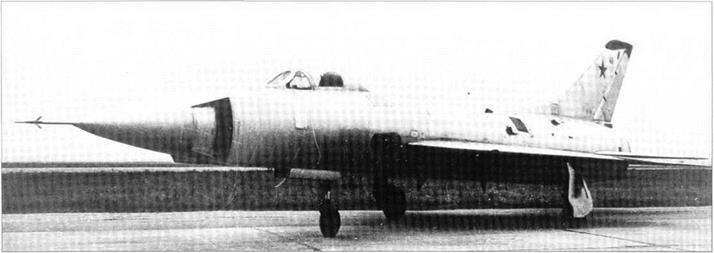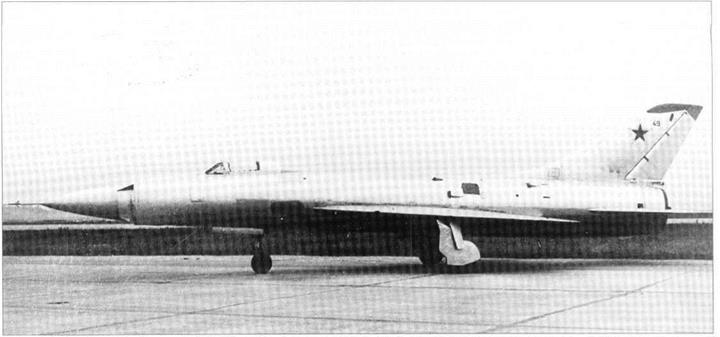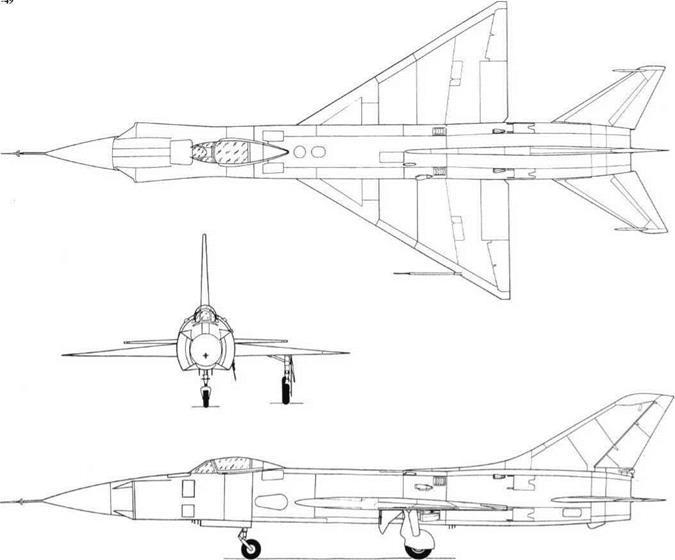Sukhoi T-49
![]()

Purpose: To create a further-improved interceptor.
Design Bureau: OKB-51 ofP O Sukhoi, Moscow.
In May 1958 the OKB-51 decided that, after more than four years of effort, they had still not found the best answer to the problem of how to arrange the radar, air inlet(s) and armament of a single-engined supersonic interceptor. It was recognized that guided missiles would be carried externally, probably under the wings, leaving the nose free for radar, but the engine inlet still posed a problem. The PT-8 and T-47 had large radars centred in a nose inlet, and this was considered to degrade the aerodynamics. Accordingly a new arrangement was devised, and the OKB conveniently were able to graft it on to the incomplete T-39 (T-3 derivative). The result
thus received the designation T-49. By June 1958 work on the T-39 had been stopped, and this project was transferred as a test-bed to the Central Institute of Aviation Motors. Conversion to the T-49 was completed by October 1958. In 1959 M Goncharov was appointed to supervise flight testing, but the T-49 remained on the ground – much of the time being used for various tests – until in January 1960 it was flown by Anatoly Koznov. He reported outstanding acceleration and good allround performance, but by this time aircraft in this class had been overtaken by later technology. In April 1960 the T-49 was damaged in an inflight accident, and though it was repaired it never flew again.
The T-49 was by virtue of its ancestry very similar to the simpler versions of T-4 family aircraft such as the production Su-9. Like that aircraft it was intended to be armed with two
guided missiles carried on pylons under the outer wings, but these would have been of the K-8 type as carried by the Su-11. The large fixed radome was uncompromised by the inlets, which were located well back on each side. In side elevation each inlet was vertical, seen from the front it formed a 90° segment curved round the side of the fuselage, and in plan it was swept back at 60°. To match pressure recovery over the whole range of flight Mach numbers the inner wall was made variable in angle and throat area. The intention was to make the whole inlet system isentrop – ic (causing no change in entropy) to achieve maximum compression of the airflow. Like several other Sukhoi designs of the period there were two vertical doors in each side of the fuselage at Frame 7 to spill excess air from the ducts. The engine was a Lyul’ka AL-7F-100, with a dry rating of 6,900kg (15,212 Ib) and maximum afterburning thrust of 9,900kg (21,82515). This was achieved without the need for the injection of water, the T-39’s rear-fuselage water tank being replaced by one for fuel. Other features included steel doubler plates left over from the T-39 near where gun muzzles would have been had they been fitted, tailplanes fitted with anti-flutter masses and driven over the exceptional angular range +97-16°, and flaps whose trailing-edge roots were cut away at 45°, which was also a feature of the production Su-11.
This promising aircraft was overtaken by galloping technology.
|
|
|
|
|













